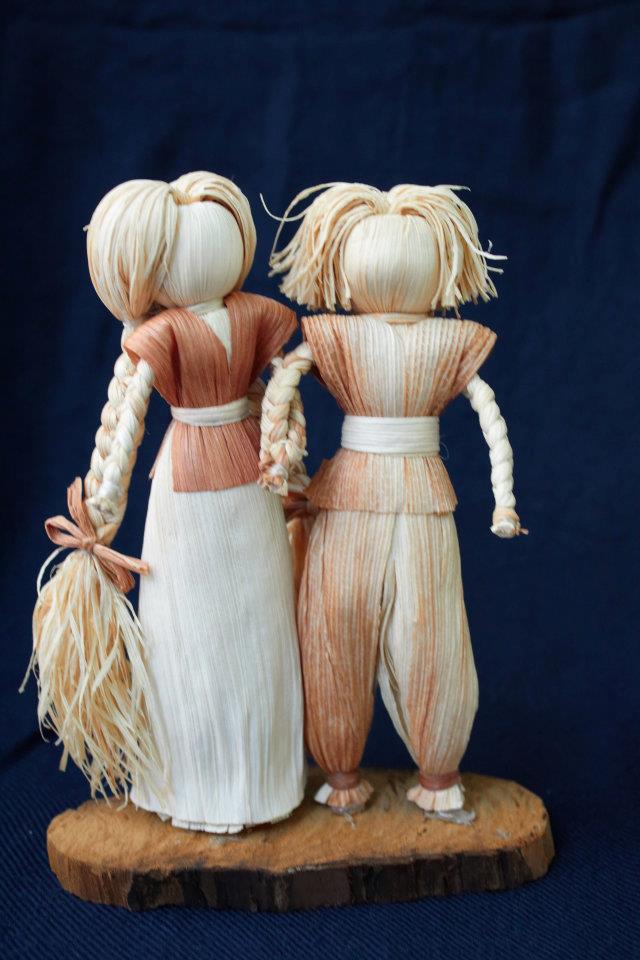Corn husk dolls have been made by Northeastern Native Americans probably since the beginnings of corn agriculture more than a thousand years ago. Brittle dried corn husks become soft if soaked in water and produce finished dolls sturdy enough for Penobscot children’s toys.
In addition to their use for amusement, some corn husk dolls are used in sacred healing ceremonies. A type of Iroquois corn husk doll was made in response to a dream. The doll was then discarded, put back to earth to carry away the evil of the dream.
Both boy and girl dolls are made using the corn silk tassel for hair. Feet and body are stuffed with leaves and tied while arms and legs are made from braided or rolled husks. Dolls measure anywhere between four and ten inches tall. Sometimes a face is drawn, or red dots are painted for cheeks; but more often than not the doll’s face is left blank.
The dolls are often dressed in corn husks, animal hide or cloth but some are made without clothing. Personal equipment is produced for many dolls, and this helps children practice to prepare the things needed for everyday life. Girl dolls would be given cradle boards, hoes, sewing kits or other women’s things, while boys could be provided with bows and arrows, canoe paddles and warrior’s gear.
© nativetech.org

 Corn Husk Dolls made by Galina Moroz
Corn Husk Dolls made by Galina Moroz